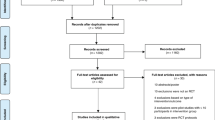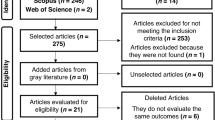Abstract
Objective:
The aim of this study was to evaluate the effects of massage with or without kinesthetic stimulation on weight gain and length of hospital stay in the preterm infant.
Study Design:
A prospective randomized clinical trial was conducted evaluating the effects of massage with or without kinesthetic stimulation (KS) on weight gain and length of stay (LOS) in medically stable premature (<1500 g and/or ⩽32 weeks gestational age) neonates. Infants were randomized either to receive no intervention (control), massage therapy alone (massage), or massage therapy with KS (M/KS). Linear regression analysis was performed to evaluate differences in the primary outcomes between the groups after controlling for covariates. Post hoc analysis with stratification by birthweight (BW> and <1000 g) was also performed.
Result:
A total of 60 premature infants were recruited for this study; 20 infants in each group. Average daily weight gain and LOS were similar between the groups after controlling for covariates. For infants with BW>1000 g, average daily weight gain was increased in the intervention groups compared to control. This effect was mainly attributable to the M/KS group.
Conclusion:
Massage with KS is a relatively simple and inexpensive intervention that can improve weight gain in selected preterm infants. Length of hospital stay is not impacted by massage with or without KS. Further studies are needed to evaluate the effect of massage in the extremely low BW(<1000 g) infant.
This is a preview of subscription content, access via your institution
Access options
Subscribe to this journal
Receive 12 print issues and online access
$259.00 per year
only $21.58 per issue
Buy this article
- Purchase on Springer Link
- Instant access to full article PDF
Prices may be subject to local taxes which are calculated during checkout


Similar content being viewed by others
References
White JL, Labarba RC . The effects of tactile and kinesthetic stimulation on neonatal development in the premature infant. Dev Psychobiol 1976; 9: 569–577.
Field T, Schanberg SM, Scafidi F, Bauer CR, Vega-Lahr N, Garcia R et al. Tactile/kinesthetic stimulation effects on preterm neonates. Pediatrics 1986; 77: 654–658.
Scafidi FA, Field TM . Massage stimulates growth in preterm infants: a replication. Infant Behav Dev 1990; 13: 167–188.
Scafidi F, Field T, Schanberg S . Factors that predict which preterm infants benefit most from massage therapy. J Dev Behav Pediatr 1993; 14: 176–180.
Mathai S, Fernandez A, Modkar J, Kanbur W . Effects of tactile-kinesthetic stimulation in preterms: a controlled trial. Indian Pediatr 2001; 38: 1091–1098.
Ferber SG, Kuint J, Weller A, Feldman R, Dollberg S, Arbel E et al. Massage therapy by mothers and trained professionals enhances weight gain in preterm infants. Early Hum Dev 2002; 67: 37–45.
Dieter JNI, Field T, Hernandez-Reif M, Emory EK, Redzepi M . Stable preterm infants gain more weight and sleep less after five days of massage therapy. J Pediatr Psychol 2003; 28: 403–411.
Aly H, Moustafa MF, Hassanein SM, Massaro AN, Amer HA, Patel K . Physical activity combined with massage improves bone mineralization in premature infants: a randomized trial. J Perinatol 2004; 24: 305–309.
Scafidi FA, Field TM, Schanberg SM, Bauer CR, Vega Lahr N, Garcia R et al. Effects of tactile/kinesthetic stimulation on the clinical course and sleep/wake behavior of preterm neonates. Infant Behav Dev 1986; 9: 91–105.
Solkoff N, Matuszak D . Tactile stimulation and behavioral development among low-birthweight infants. Child Psychiatry Hum Dev 1975; 6: 33–37.
Vickers A, Ohlssom A, Lacy JB, Horsley A . Massage for promoting growth and development of preterm and/or low birth-weight infants. Cochrane Database of Systematic Reviews 2004, Issue 2. Art. No.: CD000390. doi:10.1002/14651858.CD000390.pub2.
Ehrenkranz RA, Walsh MC, Vohr BR, Jobe AH, Wright LL, Fanaroff AA, et al., National Institutes of Child Health and Human Development Neonatal Research Network. Validation of the National Institutes of Health consensus definition of bronchopulmonary dysplasia. Pediatrics 2005; 116: 1353–1360.
Harrison LL, Williams AK, Berbaum ML, Stern JT, Leeper J . Physiologic and behavioral effects of gentle human touch on preterm infants. Res Nurs Health 2000; 23: 435–446.
White-Traut RC, Tubeszewski K . Multimodal stimulation of the premature infant. J Pediatr Nurs 1986; 1: 90–95.
Pauk J, Kuhn CM, Field TM, Schanberg SM . Positive effects of tactile versus kinesthetic or vestibular stimulation on neuroendocrine and ODC activity in maternally-deprived rat pups. Life Sci 1986; 39: 2081–2087.
Schanberg SM, Field TM . Sensory deprivation stress and supplemental stimulation in the rat pup and preterm human neonate. Child Dev 1987; 58: 1431–1447.
Van Wyk JJ, Underwood LE . Growth hormone, somatomedins, and growth failure. Hosp Pract 1978; 13: 57–67.
Diego MA, Field T, Hernandez-Reif M . Vagal activity, gastric motility, and weight gain in massaged preterm neonates. J Pediatr 2005; 147: 50–55.
Young VR, Torun B . Physical Activity: Impact on Protein and Amino Acid Metabolism and Implications for Nutritional Requirements. Nutrition in Health and Disease and International Development: Sumposia from the XII International Congress on Nutrition. Liss: New York, 1981.
Moyer-Mileur L, Luetkemeier M, Boomer L, Chan GM . Effect of physical activity on bone mineralization in premature infants. J Pediatr 1995; 127: 620–625.
Moyer-Mileur LJ, Brunstetter V, McNaught TP, Gill G, Chan GM . Daily physical activity program increases bone mineralization and growth in preterm very low birth weight infants. Pediatrics 2000; 106: 1088–1092.
Nemet D, Dolfin T, Litmanowitz I, Shainkin-Kestenbaum R, Lis M, Eliakim A . Evidence for exercise-induced bone formation in premature infants. Int J Sports Med 2002; 23: 82.5.
Litmanovitz I, Dolfin T, Friedland O, Arnon S, Regev F, Shainkin-Kestenbaum R et al. Early physical activity intervention prevents decrease of bone strength in very low birth weight infants. Pediatrics 2003; 112: 15–19.
Uvnas-Moberg K, Widstrom AM, Marchini G, Winberg J . Release of GI hormones in mother and infant by sensory stimulation. Acta Paediatr Scand 1987; 76: 851–860.
Charpak N, Ruiz JG, Zupan J, Cattaneo A, Figueroa Z, Tessier R et al. Kangaroo mother care: 25 years after. Acta Paediatr 2005; 94: 514–522.
Acolet D, Modei N, Giannakoulopoulos X, Bond C, Clow A, Glover V . Changes in plasma cortisol and catecholamine concentrations in response to massage in preterm infants. Arch Dis Child 1993; 68: 29–31.
Schulzke SM, Trachsel D, Patole SK . Physical activity programs for promoting bone mineralization and growth in preterm infants. Cochrane Database of Systematic Reviews 2007, Issue 2. Art. No.: CD005387. doi:10.1002/14651858.CD005387.pub2.
White Traut RC, Nelson MN . Maternally administered tactile, auditory, visual, and vestibular stimulation: relationship to later interactions between mothers and premature infants. Res Nurs Health 1988; 11: 31–39.
Acknowledgements
We thank Adenike Oloade, Inderjeet Sandhu and Mary Rivas for their assistance with patient enrollment and compiling and maintaining the dataset.
Author information
Authors and Affiliations
Corresponding author
Rights and permissions
About this article
Cite this article
Massaro, A., Hammad, T., Jazzo, B. et al. Massage with kinesthetic stimulation improves weight gain in preterm infants. J Perinatol 29, 352–357 (2009). https://doi.org/10.1038/jp.2008.230
Received:
Revised:
Accepted:
Published:
Issue Date:
DOI: https://doi.org/10.1038/jp.2008.230
Keywords
This article is cited by
-
A systematic review and multivariate meta-analysis of the physical and mental health benefits of touch interventions
Nature Human Behaviour (2024)
-
NICU sensory experiences associated with positive outcomes: an integrative review of evidence from 2015–2020
Journal of Perinatology (2023)
-
Effect of whole body massage on pain scores of neonates during venous puncture and comparison with oral dextrose and Kangaroo care, a randomized controlled evaluator-blind clinical study
Journal of Perinatology (2023)
-
Effect of physiotherapy on the promotion of bone mineralization in preterm infants: a randomized controlled trial
Scientific Reports (2022)
-
Effect of physical therapy on bone remodelling in preterm infants: a multicenter randomized controlled clinical trial
BMC Pediatrics (2022)



